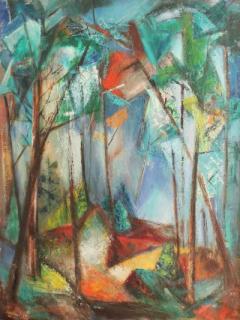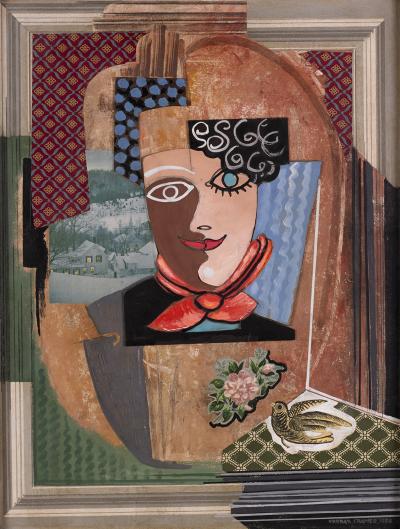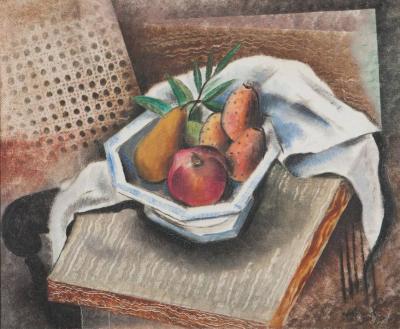Konrad Cramer
American, 1888 - 1963
A painter of abstraction including numerous still lifes and non-objective work, he became one of America's earliest modernist painters who founded and directed the Woodstock, New York Art Association and the Woodstock School of Painting. In painting style, he was one of the more radical artists working there, adapting cubism to the local landscape. He divided his time between Woodstock and Manhattan and was highly prominent in progressive art circles. He was a close friend of Alfred Stieglitz, who interested him in photography, and this led to Cramer's directing and teaching at The Woodstock School of Miniature Photography. He was also a skillful illustrator and textile designer. He was born in Wurtzburg, Germany, and was early influenced by the Munich expressionists called the "Blaue Reiter," or "Blue Rider" group. The group was founded by Wassily Kandinsky and was the avant-garde art movement of its day. Cramer used oil, watercolor, and ink in a loose, free flowing style that depicted fish, nudes and other objects. From that subject matter, he switched to Cubism, inspired by Cezanne's planes of light. In 1911, he married an American art student and came to America, where he began his distinguished career. In 1913, he established his American reputation with a pioneering series of abstract paintings. His post World War I style became a fusion of European modernism with imagery of American culture such as common household objects in his still lifes. Cramer exhibited his work at the Woodstock Art Association and the Society of Independent Artists in New York, as well as at venues such as the Pennsylvania Academy of the Fine Arts in Philadelphia, the Carnegie Institute in Pittsburgh, the Art Institute of Chicago and the Corcoran Gallery of Art in Washington, D.C. In 1930 he shared a two-man exhibition at the Dudensing Gallery in Manhattan with Adolph Gottlieb. Solo exhibitions of his work were held at Club Latin in Cincinnati (1932), the State University of New York at New Paltz (1952), the Woodstock Guild of Craftsman (1956), and Long Island University (1958). Cramer died in Woodstock on January 28th 1963. His paintings can be found in public collections across the country, including the Flint Institute of Art, Flint, Michigan; the Weatherspoon Art Gallery, University of North Carolina, Greensboro, North Carolina; the Heckscher Museum of Art, Huntington, New York; the Sheldon Memorial Art Gallery, Lincoln, Nebraska; the Whitney Museum of American Art, New York; San Diego Museum of Art; the National Portrait Gallery, Washington, D.C.; and the Woodstock Artists Association.
Konrad Cramer Paintings & Art
Konrad Cramer Paintings & Art
